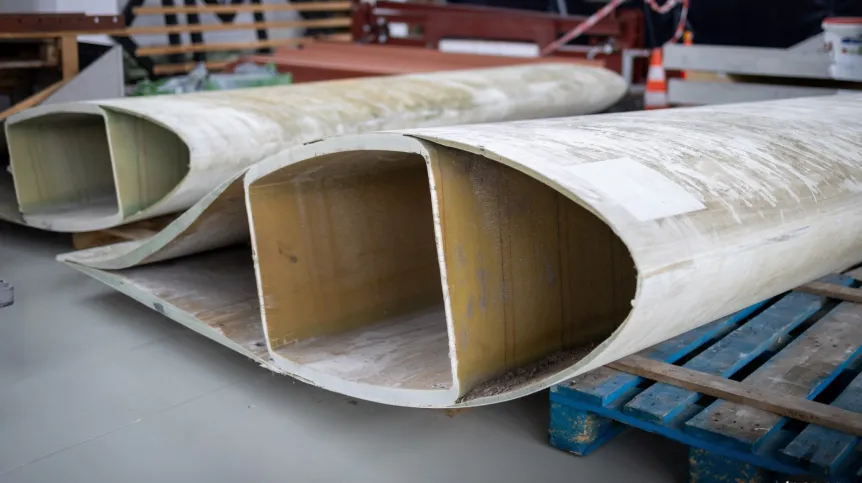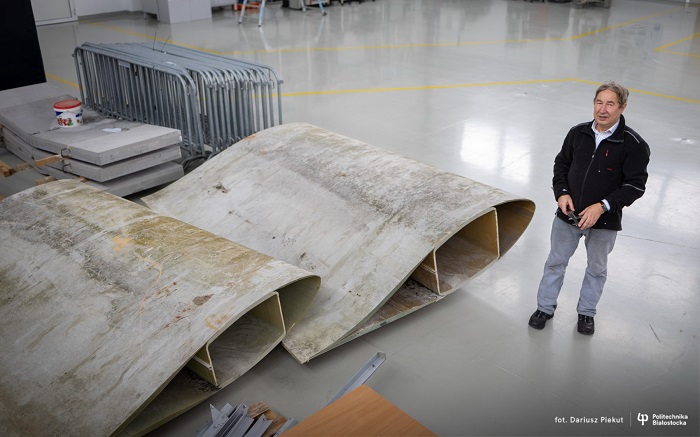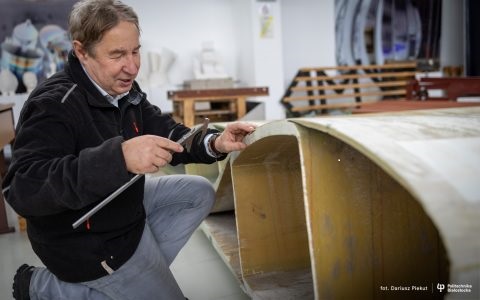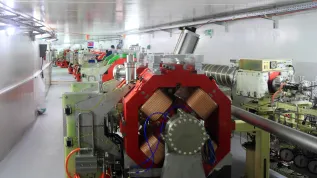
Scientists working in the Via Carpatia Polytechnic Network are developing innovative noise barriers from giant wind turbine blades that lie in landfills near wind farms.
The average life cycle of a wind turbine blade is 20-25 years. According to Dr. Mirosław Broniewicz from the Bialystok University of Technology, after 2035 approximately 225,000 tons of used blades should be recycled. 'A group of scientists I am a part of noticed that there are huge problems with disposal of wind turbine blades that have become obsolete or are being replaced with more effective technical solutions,’ says Dr. Broniewicz from the university’s Department of Building Structures and Structural Mechanics, Faculty of Civil Engineering and Environmental Sciences.

According to the university’s press release, hundreds of huge turbine blades that practically do not decompose are stored, especially near the western border of Poland. They are made of composite materials reinforced with glass fibre, which scientists from three universities from the eastern wall associated with the Via Carpatia Polytechnic Network want to use to build road noise barriers.
HOW ARE ROAD NOISE BARRIERS BUILT?
Currently used reinforced concrete road noise barriers are very durable, but - as Broniewicz explains - 'they are use cement, the production of which is very harmful to the environment'. Noise barriers made of plastic elements may be subject to degradation, while barriers made of corrugated or trapezoidal sheets are not very resistant to environmental conditions, especially those related to road salt, and corrode quickly. 'Hence the idea to use composite materials to build screens,’ Broniewicz says.
Such an excellent composite material is waste material from composite wind turbine blades.
HOW TO BUILD A ROAD NOISE BARRIER FROM WIND TURBINE BLADES?
When creating the initial concept, scientists from the Bialystok University of Technology planned to cut the blades into smaller parts, from which acoustic screen panels would be assembled.
A wind turbine blade poses a challenge when designing noise barriers. 'These elements have continuous curvature - both the cross-section and the thickness change,’ says Dr. Broniewicz.
The members of the team working on the solutions are: Dr. Krzysztof Czech, also from the Department of Building Structures and Structural Mechanics, Faculty of Civil Engineering and Environmental Sciences at the Bialystok University of Technology, Dr. Robert Andrzej Stachniewicz from the Department of Sustainable Construction and Building Installations, and Filip Broniewicz, a doctoral candidate.

The problem was that wind turbine blades are made of different types of materials. The internal reinforcing ribs are made of a 3-cm-thick full composite, while the remaining part is made of a three-layer, sandwich material, where only the 3-mm-thick external claddings are composite elements, while the core is made of balsa wood.
'In order to use as much material as possible from each propeller, we examined the mechanical properties of the solid composite as well as the mechanical properties of the three-layer material,’ says Dr. Broniewicz. The scientists used the Finite Element Method and created a numerical model of an example noise barrier.
'We loaded it in accordance with the requirements of the subject standards, taking into account both the wind load acting on the road screens and the traffic load, i.e. all the required types of load, and we numerically checked the strength of these panels. The results were satisfactory because the degree of stress of the acoustic panel under the most extreme loads was 47 percent, which means that according to the simulation, these are very durable elements,’ says Broniewicz.
STRENGTH AND ACOUSTIC TESTS
According to the press release, the time has come for experimental research. Huge propellers are waiting to be cut in the Department of Building Structures and Structural Mechanics. The I-sections and C-sections that will be used to make the actual barrier are already prepared.
'The elements cut from the wind turbine propeller will be fitted into the cold-bent C-section frame, and the whole thing will be mounted on 160 mm steel I-section columns and loaded with a system of hydraulic actuators to illustrate the actual load acting on the road structure,’ Dr. Broniewicz says.

After strength tests, the model panels will undergo acoustic tests, during which scientists will verify the acoustic effectiveness of the panels. First - with specialized software, i.e. IT tools, and then in a large acoustic chamber at the Rzeszów University of Technology - a partner university in the Via Carpatia Polytechnic Network. 'Our natural-scale element will be tested using specialized equipment for testing acoustic properties,’ says Broniewicz.
The joint project is an element of the ISKRA programme, which involves building inter-university research teams. Completion of the project 'Reuse of wind turbine blades in engineering structures' is planned for the end of July 2025.
At the same time, scientists from all three universities in the network are preparing the first international publication in a scientific journal.
According to the Bialystok University of Technology website, there are no effective methods of reusing wind turbine blades in the world yet. American scientists decompose the composite material in the pyrolysis process under the influence of high temperature, separating the organic material from the inorganic glass fibres, thus obtaining a material that, when burned, is used to generate energy. Unfortunately, this is a long and energy-consuming process.
The Danes, in turn, convert turbine blades into small architecture elements such as benches, bus stops, bicycle shelters or garden furniture. Scientists from the Rzeszów University of Technology proposed using turbine blades in bridge construction to make load-bearing elements of pedestrian footbridges. This idea, included in the Via Carpatia Polytechnic Network programme, will make it possible to use almost entire wind turbine blades to build road screens.
PAP - Science in Poland
amk/ agt/ kap/
tr. RL













